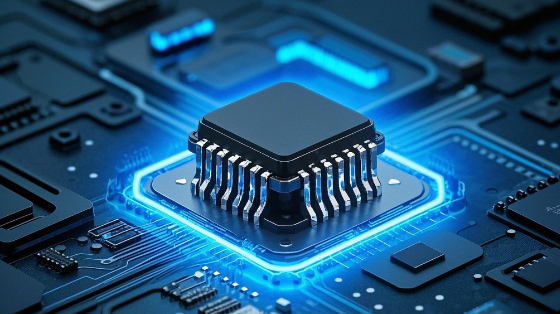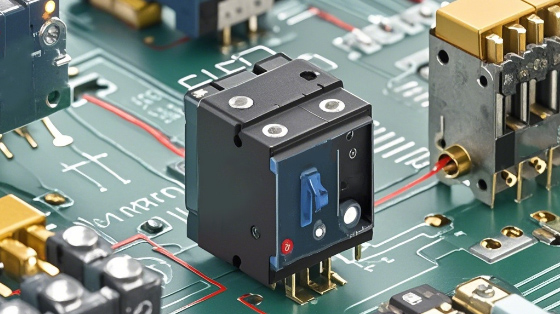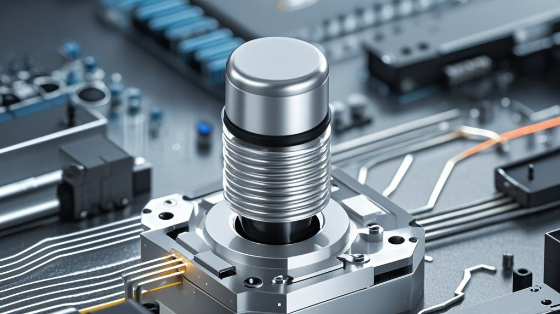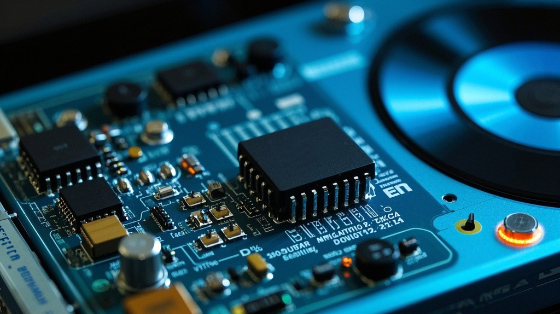In the vast and intricate world of electronics, discrete semiconductors stand as essential building blocks that enable a multitude of functions and applications. These individual semiconductor components, distinct from integrated circuits, play a crucial role in powering and controlling various electronic devices and systems, from the simplest consumer gadgets to the most complex industrial machinery.
A fundamental type of discrete semiconductor is the diode. A diode is a two-terminal device that allows current to flow in one direction while blocking it in the opposite direction. It operates based on the principle of the p-n junction, where a region of p-type semiconductor (with an excess of holes) and a region of n-type semiconductor (with an excess of electrons) are joined together. When a positive voltage is applied to the p-side relative to the n-side, the diode is forward-biased, and current can flow. However, when the voltage is reversed, the diode is reverse-biased, and only a very small leakage current flows. Diodes are used in a wide range of applications. For instance, in power supplies, rectifier diodes are employed to convert alternating current (AC) to direct current (DC). They are also used in signal demodulation, where they extract the original information from a modulated carrier wave. In addition, light-emitting diodes (LEDs) have become ubiquitous in lighting applications, from indicator lights in electronic devices to energy-efficient lighting solutions in homes and businesses. LEDs emit light when current passes through them, and their efficiency and long lifespan have made them a preferred choice over traditional incandescent and fluorescent lights.

Transistors are another vital class of discrete semiconductors. Bipolar junction transistors (BJTs) and field-effect transistors (FETs) are the two main types. BJTs have three terminals: the emitter, the base, and the collector. They can be used as amplifiers, where a small input current at the base controls a larger output current between the collector and the emitter. For example, in audio amplifiers, BJTs are used to increase the amplitude of the audio signal, allowing it to drive speakers and produce louder sound. FETs, on the other hand, work based on the modulation of an electric field. They have a gate terminal that controls the current flow between the source and the drain terminals. FETs are widely used in digital circuits due to their high input impedance and low power consumption. They are also commonly found in power electronics applications, such as in switching power supplies, where they efficiently control the flow of power.
Thyristors are a family of discrete semiconductors that are used for high-power control applications. The most common type is the silicon-controlled rectifier (SCR). SCRs have four layers of alternating p-type and n-type semiconductor material and three terminals: the anode, the cathode, and the gate. Once triggered into conduction by a small current at the gate, the SCR can conduct a large current in one direction until the current is reduced below a certain level or the voltage across it is reversed. Thyristors are used in applications such as motor speed control, power factor correction, and high-voltage DC transmission systems. For example, in an industrial motor control circuit, an SCR can be used to adjust the voltage applied to the motor, thereby controlling its speed and torque.
The manufacturing process of discrete semiconductors is a complex and highly precise operation. It typically starts with the growth or preparation of high-purity semiconductor wafers, usually made of silicon or germanium. The wafers are then processed through a series of steps, including doping, which involves introducing impurities into specific regions of the wafer to create the desired p-type or n-type semiconductor regions. Photolithography is used to define the patterns of the semiconductor devices on the wafer, and etching is employed to remove unwanted material. After the individual semiconductor components are fabricated on the wafer, they are separated and packaged. The packaging is crucial as it provides protection from environmental factors such as moisture, dust, and mechanical stress, and also allows for easy connection to other components in an electronic circuit.
Discrete semiconductors are used in a vast array of industries and applications. In the automotive industry, they are essential for engine control units, where they control fuel injection, ignition timing, and various sensors and actuators. They are also used in automotive lighting systems, with LEDs replacing traditional bulbs for headlights, taillights, and interior lights. In the telecommunications industry, discrete semiconductors are used in radio frequency (RF) circuits, such as in mobile phone base stations and satellite communication systems. They are used for signal amplification, frequency conversion, and modulation/demodulation. In the consumer electronics sector, from smartphones and tablets to televisions and gaming consoles, discrete semiconductors are used for power management, audio and video processing, and display control.
The performance characteristics of discrete semiconductors are of utmost importance. Parameters such as maximum voltage and current ratings, power dissipation, switching speed, and frequency response determine their suitability for different applications. For example, a transistor used in a high-frequency RF circuit needs to have a fast switching speed and low parasitic capacitance to minimize signal distortion. On the other hand, a thyristor used in a high-power industrial application must be able to handle large currents and voltages without failing.
The future of discrete semiconductors holds great promise, with continuous research and development efforts focused on improving their performance and expanding their applications. One area of active research is the development of wide bandgap semiconductors, such as silicon carbide (SiC) and gallium nitride (GaN). These materials offer several advantages over traditional silicon-based semiconductors, including higher breakdown voltages, lower on-resistance, and better thermal conductivity. SiC and GaN-based discrete semiconductors are expected to have a significant impact on power electronics applications, enabling more efficient power conversion and higher power density. For example, in electric vehicle charging stations and renewable energy systems, such as solar inverters and wind turbine converters, the use of wide bandgap semiconductors can improve the overall efficiency and reduce the size and weight of the power conversion equipment.
Another trend is the miniaturization and integration of discrete semiconductors. While they are distinct from integrated circuits, efforts are being made to combine multiple discrete semiconductor functions into a single package or module. This can help reduce the overall size of electronic circuits, improve reliability, and simplify the design and manufacturing process. For example, power modules that integrate transistors, diodes, and other components for motor control applications are becoming more common.
In conclusion, discrete semiconductors are an indispensable part of the electronics landscape. Their diverse functions and wide range of applications make them a cornerstone of modern technology. As research and development continue to progress, we can expect discrete semiconductors to evolve and play an even more significant role in powering the next generation of electronic devices and systems.
The global market for discrete semiconductors is highly competitive and constantly evolving. The increasing demand for energy-efficient and high-performance electronic devices, along with the growth of emerging technologies such as the Internet of Things (IoT), artificial intelligence (AI), and 5G communication, is driving the need for advanced discrete semiconductor solutions. However, the industry also faces challenges. One of the main challenges is the need to balance performance and cost. While new materials and technologies offer improved performance, they often come with higher manufacturing costs. Manufacturers need to find ways to optimize production processes and scale up production to make these advanced discrete semiconductors more affordable.
Another challenge is the environmental impact of semiconductor manufacturing. The production of semiconductors requires significant amounts of energy and resources and generates waste. There is a growing need for more sustainable manufacturing practices, such as the use of renewable energy sources, recycling of semiconductor materials, and reduction of hazardous waste. Additionally, the rapid pace of technological change means that manufacturers need to continuously invest in research and development to stay competitive and keep up with the latest trends and customer requirements.
In the field of renewable energy, discrete semiconductors are crucial for the efficient conversion and control of power. In solar photovoltaic systems, diodes are used for bypass and blocking functions, and transistors are used in power optimizers and inverters. In wind turbines, thyristors and other power semiconductors are used in the generator control and power conversion systems. In the industrial automation and robotics sector, discrete semiconductors enable precise control of motors, sensors, and other actuators, allowing for more efficient and flexible manufacturing processes.
In conclusion, discrete semiconductors have a rich history and a bright future. Overcoming the challenges related to cost, sustainability, and technological innovation will be essential for the continued growth and success of the discrete semiconductor industry, ensuring its continued contribution to the advancement of electronics and various other industries.





